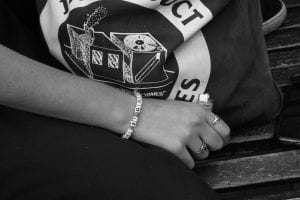Something I’m relatively familiar with after a rather haphazard production process for my shot film last year, taking a bunch of footage and trying to piece together a film in post can produce some brilliance in some instances, but it can also be (as in this particular instance) a painful and difficult process. I really struggled to find a narrative that could drive the piece forward, and to find good reasons to cut. I didn’t want to just cut for the sake of it, I wanted my edit to have some form of purpose if I was going to try and emulate Frederick Wiseman.
After a few failed attempts at creating some semblance of a coherent timeline in premier, I decided to employ a technique I used frequently last semester in my non-narrative film-making taken from Los, one of James Benning’s films. I just picked a number (5 seconds) and cut every shot at that moment. This isn’t how I was going to have my final edit, but I thought maybe some kind of interesting cutting rhythm might come out of it. I started to sense a sort of two-and-fro with the swings and the card game and so I settled upon those two things being the main parts of the piece. The film starts out with just 5 second cuts on the pieces creating a steady, monotonous rhythm (something perhaps felt throughout a lazy day at the park). Then when the card games start playing and the boy on the swing starts moving, I started cutting whenever someone either a)shifted their gaze (as if to cut to whatever they were looking towards) or b) whenever something either entered or exited the frame. I felt that this created a sense of being at the park, looking around at the other people and things, always being drawn to something moving.
For the audio, I tried to keep a lot of the swing and child sounds throughout the piece to tie it together, the audio cuts a lot less than the visuals do, with a lot of the swings audio being consistent throughout the short film. This was partly because a lot of the captured audio was unusable, but I think it gave it a bit of a through-line, which is important when a film’s narrative is being created through visual cuts, rather than an actual plot line.









